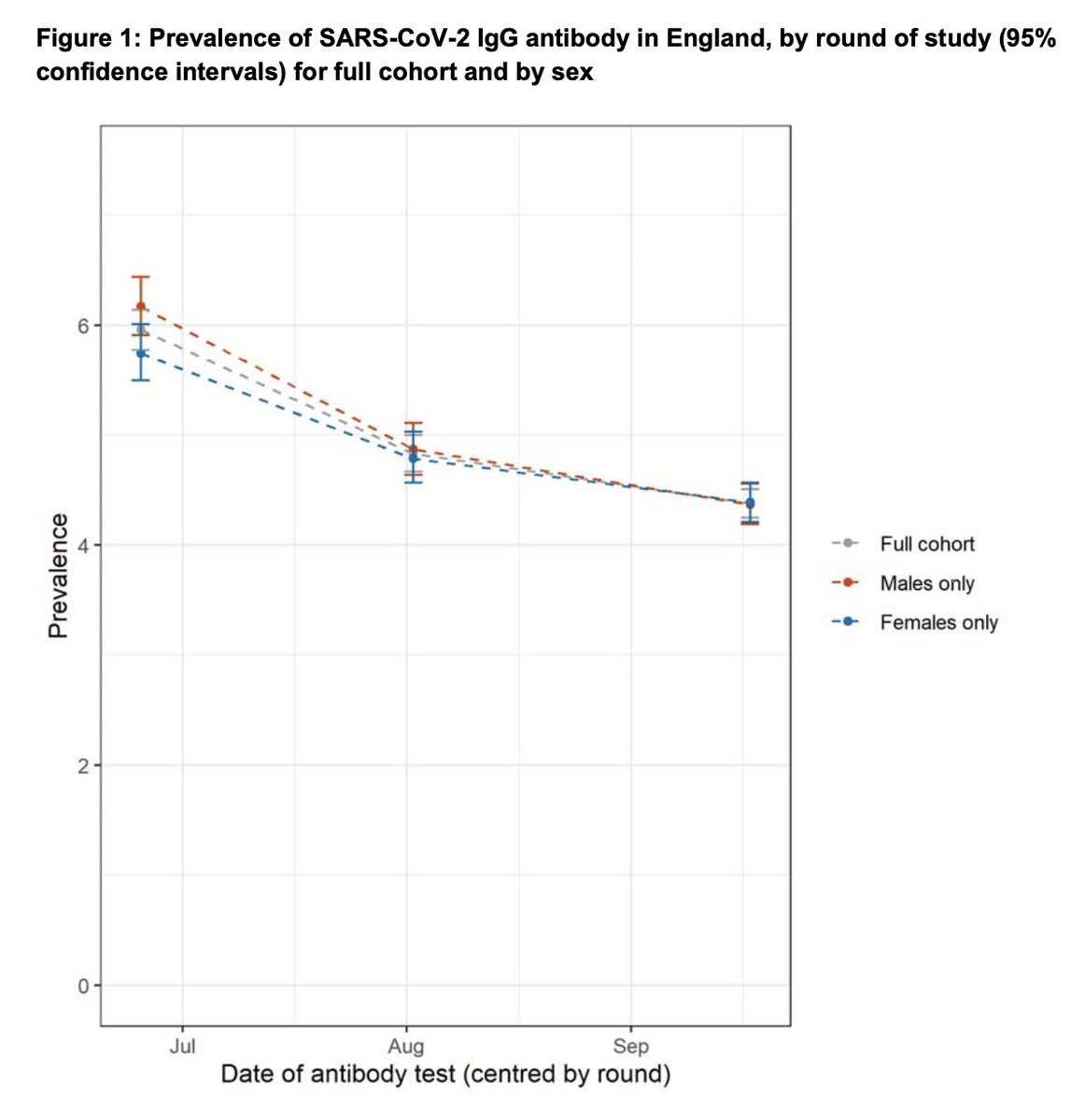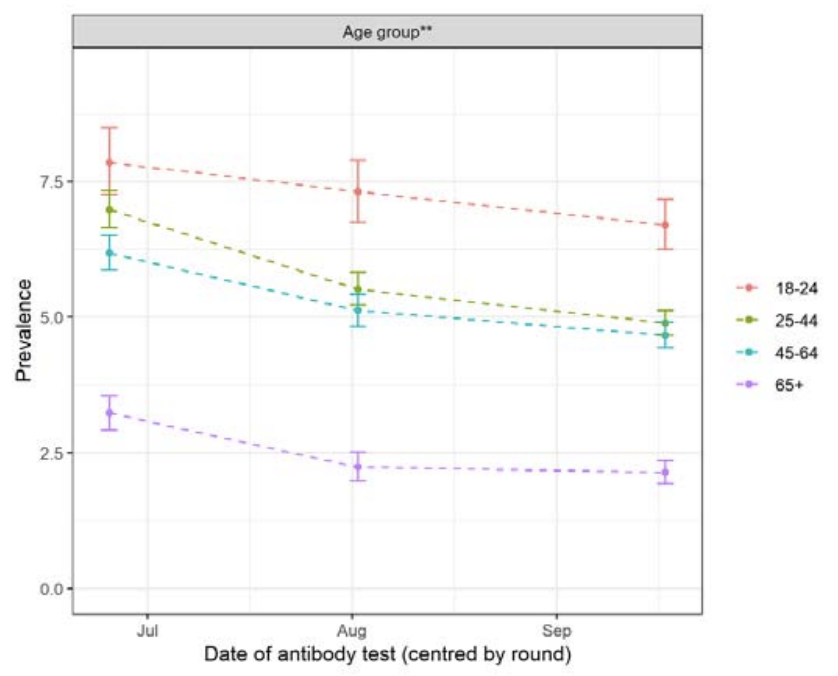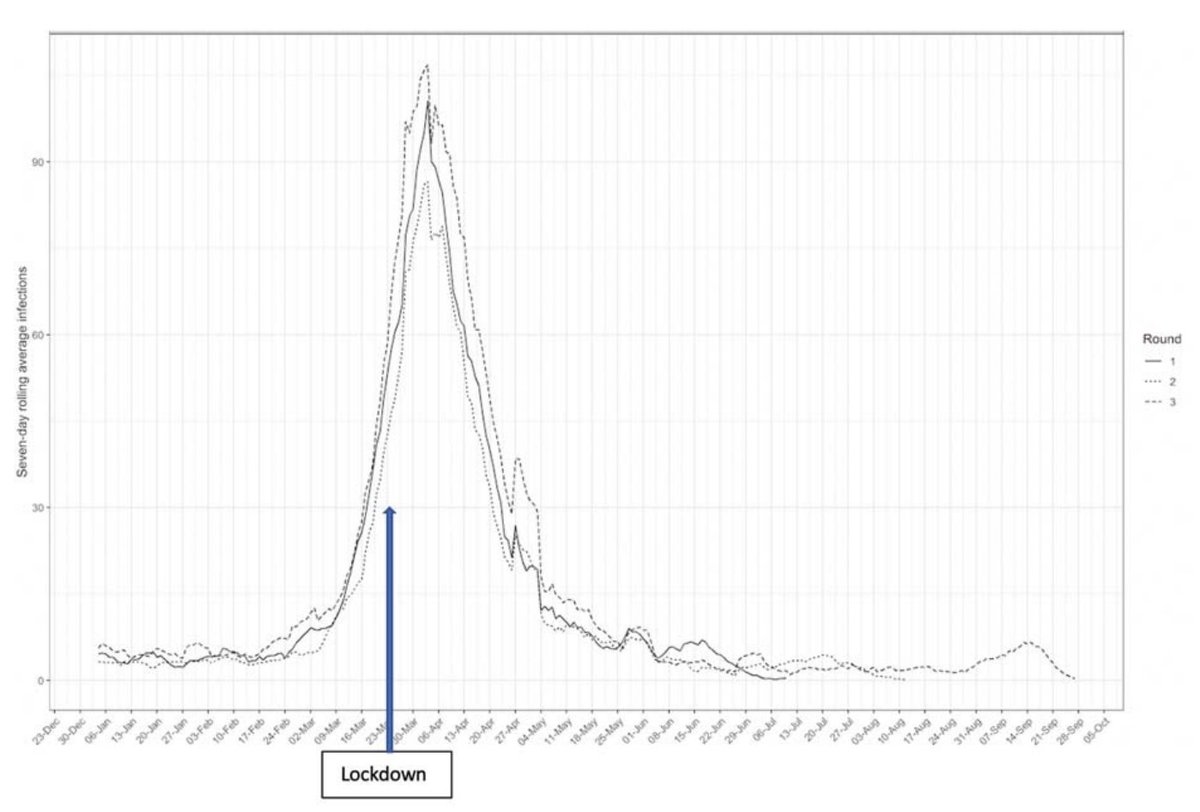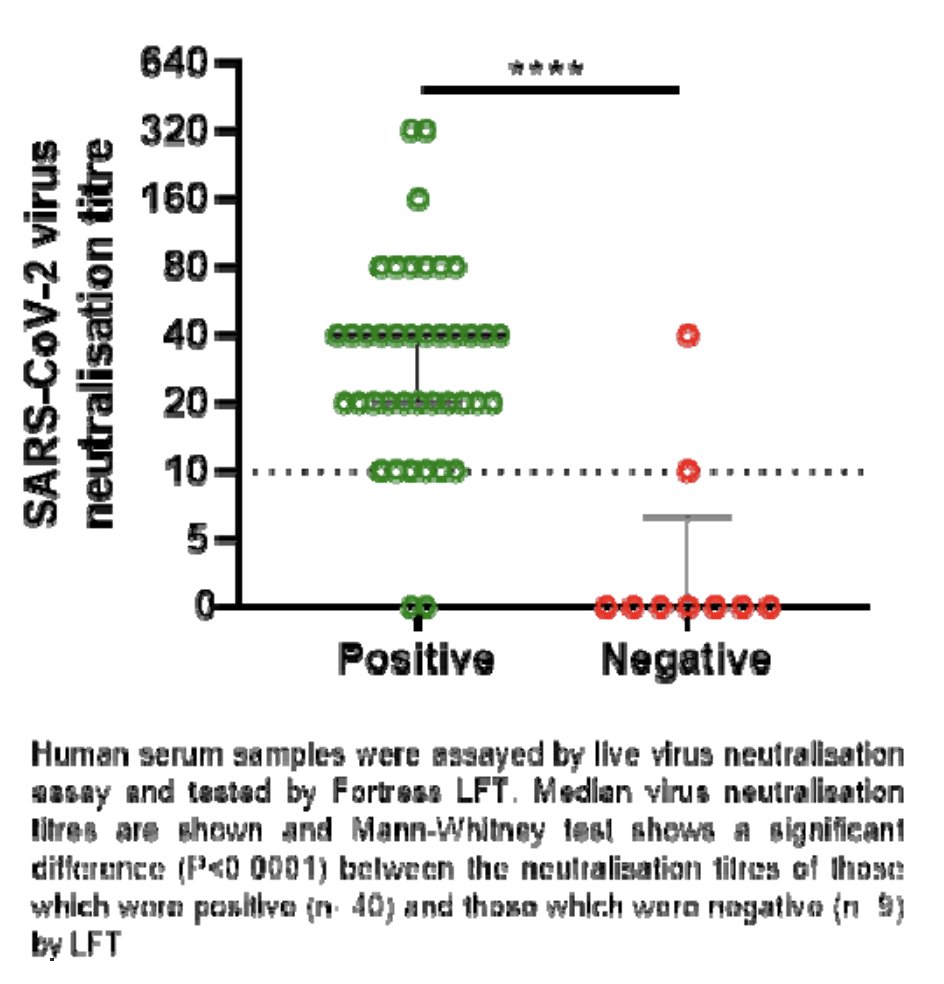A thread on our research pre-printed yesterday (not peer-reviewed) on the prevalence in England of antibodies against the virus that causes COVID-19. Full paper below 1/n
https://www.imperial.ac.uk/media/imperial-college/institute-of-global-health-innovation/MEDRXIV-2020-219725v1-Elliott.pdf">https://www.imperial.ac.uk/media/imp...
https://www.imperial.ac.uk/media/imperial-college/institute-of-global-health-innovation/MEDRXIV-2020-219725v1-Elliott.pdf">https://www.imperial.ac.uk/media/imp...
What did we do?
We approached random adults in England to take part - we sent them a letter.
The first round (R1) was in late June, R2 in August, R3 September.
Each round included >100,000 different people.
Approximately 30% of people invited agreed to take part.
2/n
We approached random adults in England to take part - we sent them a letter.
The first round (R1) was in late June, R2 in August, R3 September.
Each round included >100,000 different people.
Approximately 30% of people invited agreed to take part.
2/n
People who signed up were sent a kit with a self test using a drop of blood from a finger-prick.
Once people had done the test, they filled in a questionnaire and told use their result.
(We have already published our evaluation of the test and usability/PPIE. Iinks at end) 3/n
Once people had done the test, they filled in a questionnaire and told use their result.
(We have already published our evaluation of the test and usability/PPIE. Iinks at end) 3/n
What did we find?
The proportion of adults in England who tested positive for antibodies was 6.0% in R1, 4.8% in R2 and 4.4% in R3, an overall decline of 26%.
4/n
The proportion of adults in England who tested positive for antibodies was 6.0% in R1, 4.8% in R2 and 4.4% in R3, an overall decline of 26%.
4/n
In all rounds, the proportion testing positive was highest in the youngest people (18-24), and fell by 14.9% from R1 to R3. The prevalence was lowest in people 75+ years, and fell by 39.0% from R1 to R3.
5/n
5/n
The decline from rounds 1 to 3 was largest in groups who reported no history of COVID19 (-64.0%), while in those who reported confirmed COVID19 (by PCR swab) prevalence was high and declined by only 22.3%.
There was no change in antibody positivity in healthcare workers.
6/n
There was no change in antibody positivity in healthcare workers.
6/n
Antibody positive people with a history of COVID19 (confirmed or suspected) gave a date of symptom onset. We used these to reconstruct an epidemic curve. Most cases were in March/April. There was a steep decline in cases 2 weeks after the a national lockdown on 23 March.
7/n
7/n
We also tested how well the test used - a lateral flow immunoassay (LFIA) - related to live virus neutralization in the laboratory. We found that a positive result on the LFIA was associated with a higher titre of neutralising antibody.
8/n
8/n
What did we conclude?
We observe a significant decline in the proportion of the population with detectable antibodies over three rounds of national surveillance, using a self-administered lateral flow
test, 12, 18 and 24 weeks after the first peak of infections in England.
9/n
We observe a significant decline in the proportion of the population with detectable antibodies over three rounds of national surveillance, using a self-administered lateral flow
test, 12, 18 and 24 weeks after the first peak of infections in England.
9/n
These findings provide evidence of variable waning in antibody positivity over time, and at the start of the second wave of infection in England, only 4.4% of adults had detectable IgG antibodies using an LFIA.
10/n
10/n
Antibody positivity was greater, and declined more slowly, in younger people and those reporting a positive PCR, and was lower and declined faster in older people and those with asymptomatic infection.
11/n
11/n
While IgG antibodies are not the only immune response, our data suggest the possibility of decreasing population immunity, and may indicate increasing risk of reinfection as detectable antibodies decline in the population.
12/n.
12/n.
Last words
We are grateful to the 365000 people who took part in this study, and those who are currently taking part in the 4th round.
NB This thread is from a preprint (below) and has not yet been peer reviewed.
13/n
https://www.imperial.ac.uk/media/imperial-college/institute-of-global-health-innovation/MEDRXIV-2020-219725v1-Elliott.pdf">https://www.imperial.ac.uk/media/imp...
We are grateful to the 365000 people who took part in this study, and those who are currently taking part in the 4th round.
NB This thread is from a preprint (below) and has not yet been peer reviewed.
13/n
https://www.imperial.ac.uk/media/imperial-college/institute-of-global-health-innovation/MEDRXIV-2020-219725v1-Elliott.pdf">https://www.imperial.ac.uk/media/imp...
Related publications
1. Clincal and laboratory evaluation of SARS-CoV-2 lateral flow assays https://thorax.bmj.com/content/early/2020/08/11/thoraxjnl-2020-215732
14/n">https://thorax.bmj.com/content/e...
1. Clincal and laboratory evaluation of SARS-CoV-2 lateral flow assays https://thorax.bmj.com/content/early/2020/08/11/thoraxjnl-2020-215732
14/n">https://thorax.bmj.com/content/e...
2. Usability and acceptability of home-based self-testing for SARS-CoV-2 antibodies for population surveillance https://academic.oup.com/cid/advance-article/doi/10.1093/cid/ciaa1178/5891615
15/n">https://academic.oup.com/cid/advan...
15/n">https://academic.oup.com/cid/advan...
Authors: @profhelenward, @grahamscooke, Christina Atchison, Matthew Whitaker, @DrJoshuaElliott, Maya Moshe, Jonathan C Brown, Barney Flower, Anna Daunt, @DrKAinslie, @Deborah_Ashby, Christl Donnelly, @SRileyIDD, @aradarzi, Wendy Barclay, Paul Elliott.
Funding: @DHSCgovuk
16/ENDS
Funding: @DHSCgovuk
16/ENDS

 Read on Twitter
Read on Twitter





